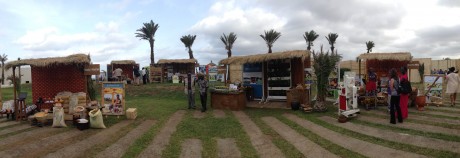Economic Empowerment
Source: USAID
As my final tour with USAID winds down in the coming months, I can step aside with pride and confidence in the work we're doing on the African continent to increase food security and nutrition.
Having worked in Africa for much of the past 30 years, I am firmly convinced that the Agency's new focus on modernizing and improving agricultural technologies through Feed the Future, President Obama's global hunger and food security initiative, is having a demonstrable impact.
Here in Senegal, recent statistics indicate a near-doubling of yields in rain-fed rice, from about 1 ton per hectare to 1.82 tons. In some of the country's most vulnerable areas, undernutrition has been reduced by a large margin in the last year.
What makes these and other statistics really exciting is an opportunity some USAID Mission Directors don't get in their entire career: a chance to exhibit some of our major successes to the President of the United States himself, who made Senegal the first stop on his second trip to Africa last week.
While here, President Obama toured the Feed the Future Agricultural Technology Marketplace, where at each stop he was able to see how agricultural research and innovation are helping West African farmers to increase incomes and nutrition for their families.
At one booth, Anna Gaye, an entrepreneur, demonstrated how switching to a small-scale, efficient rice mill and an improved rice variety has tripled yields in her region and freed up her time for alternative activities.

At another booth, Pierre Ndiaye, the owner and operator of a factory producing a popular nutritious yogurt-and-millet porridge, explained how USAID helps smallholder producers create his product. We support women's producer groups around the country to grow quality millet, providing employment to hundreds of women who produce the porridge for local schoolchildren to get a nutritious meal every day.
We were also excited to demonstrate how nutrient fortification of Senegal's staple foods can result in a radical decrease in undernutrition. Nutrition plays a critically important role in the Feed the Future approach, and fortified food can have a profound effect on the health of children in Senegal and all over Africa.
Yet another stop showed how the technology of today can help farmers as businessmen and women. A young woman president of a 3,000-strong maize farmers' union explained how they use the internet and mobile devices to control product quality and organize the marketing of their crops, which allows them to collectively compete with large industrial farms across the globe.
What makes these innovations yet more exciting is the potential for scaling them up and sharing them with other nations. New technology is only as good as our ability to get it into the hands of the millions of smallholder farmers who are the foundation for agriculture-led economic growth. Through Feed the Future, we are working to make successful technologies more and more accessible to the farmers who need them the most.
Looking back on the visit and on our tremendous successes in agriculture thus far, I can't think of a more exciting, rewarding way to end a career with USAID.
